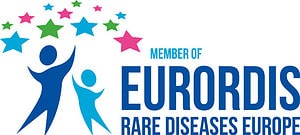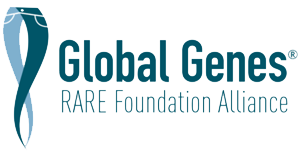General Info for ACAD9: Acyl-CoA Dehydrogenase 9 Deficiency
Overview
Acyl-CoA dehydrogenase 9 deficiency is a type of genetic condition where an enzyme needed to break down long-chain fats is unable to function properly. This prevents the body from creating needed energy during times of stress, illness, fasting, and exercise, which can lead to medical symptoms. The body usually gets its energy by breaking down, or burning, fats and sugars. People with FAODs cannot properly break down certain types of fats.
Alternative Names
ACAD9
Quick Facts
Genetics
Affected Genes
ACAD9
Inheritance Type(s)
- Autosomal recessive
Cause and Genetics
People usually have two copies of the ACAD9 gene, one inherited from each parent. ACAD9 deficiency occurs when there are changes in both copies of the ACAD9 gene (autosomal recessive inheritance). Someone who has a change in only one copy of the ACAD9 gene is called a carrier, and they usually do not have any medical symptoms. If both parents are carriers, there is a 1 in 4 chance with each pregnancy that their child will have ACAD9 deficiency.
Frequency
Frequency - More Information
The exact frequency of ACAD9 deficiency is unknown. Scientific papers have reported at least 70 people with ACAD9 deficiency worldwide.
Affected Biological Gender
Both Male and Female
Signs and Symptoms of ACAD9: Acyl-CoA Dehydrogenase 9 Deficiency
ACAD9 deficiency can cause a range of signs and symptoms. Always check with your doctor if your child is doing something out of “their” normal, as every child may present with symptoms a little differently.
Signs and symptoms may include:
- Enlarged, weakened heart muscle (hypertrophic cardiomyopathy)
- Liver disease
- Large head (macrocephaly)
- Specific type of neurological condition called Leigh’s syndrome
- Difficulty in suckling
- Loss of head control and motor skills
- Loss of appetite
- Vomiting
- Seizures
- Weakness and lack of muscle tone (hypotonia)
- Extreme muscle tightness (spasticity)
- Movement disorders
- Loss of control in the joints (cerebellar ataxia)
- Loss of nerve function in feet, legs, and fingers (peripheral neuropathy)
Milder cases of ACAD9 deficiency may not be identified until adolescence or adulthood. These individuals can present with nausea and extreme fatigue/tiredness after exercise.
Diagnosis
ACAD9 deficiency can be diagnosed by:
- Measuring biochemical markers in the blood or urine
- Measuring the amount of a fat product called acylcarnitine in the liver
- Performing a genetic test to look for changes in the ACAD9 gene, including whole exome sequencing
Newborn Screening: Recommended Uniform Screening Panel (RUSP)
No
Newborn Screening - More Information
Treatment of ACAD9: Acyl-CoA Dehydrogenase 9 Deficiency
Treatment and Management
Treatment and management of ACAD9 deficiency may include:
- Prevention of low blood sugar (hypoglycemia)
- Monitoring lactic acid to detect a buildup called lactic acidosis
- Possible Vitamin B2 (riboflavin) supplements
- Routine treatment of heart and liver symptoms
Parents should call their healthcare provider immediately if babies show symptoms like excessive sleepiness, vomiting, diarrhea, a fever, poor appetite, or an infection. Medical treatment should be sought immediately if there is loss of consciousness or severe confusion (decompensation), as these are signs of dangerously low blood sugar. Patients should also discuss the appropriate preparation for anesthesia with their metabolic team.
Resources
- Acyl-CoA dehydrogenase 9 deficiency – The National Institutes of Health
- ACAD9 Deficiency | Fatty Acid Oxidation Disorders Diagnosis – The INFORM Network
Connecting with others impacted by a rare disease allows for vital information to be shared about day-to-day life, prevents isolation, and gives hope. Please contact MitoAction for peer support opportunities at 888-MITO-411 or email mito411@mitoaction.org.
Other resources we recommend are:
Download the ACAD9: Acyl-CoA Dehydrogenase 9 Deficiency Fact Sheet (PDF)
MitoAction does not provide medical advice, diagnosis, treatment, or legal advice. It is essential that all those living with or caring for someone with a Mitochondrial or FAOD disease have an emergency protocol letter. These letters, which are written and signed by a doctor, share details about prescribed treatment during crises and in emergency room settings. Always check with your doctor if you or your child has concerns as everyone may present with symptoms differently. Before beginning any treatment or therapy, please consult with your physician.
Last Updated: 11/15/2022









